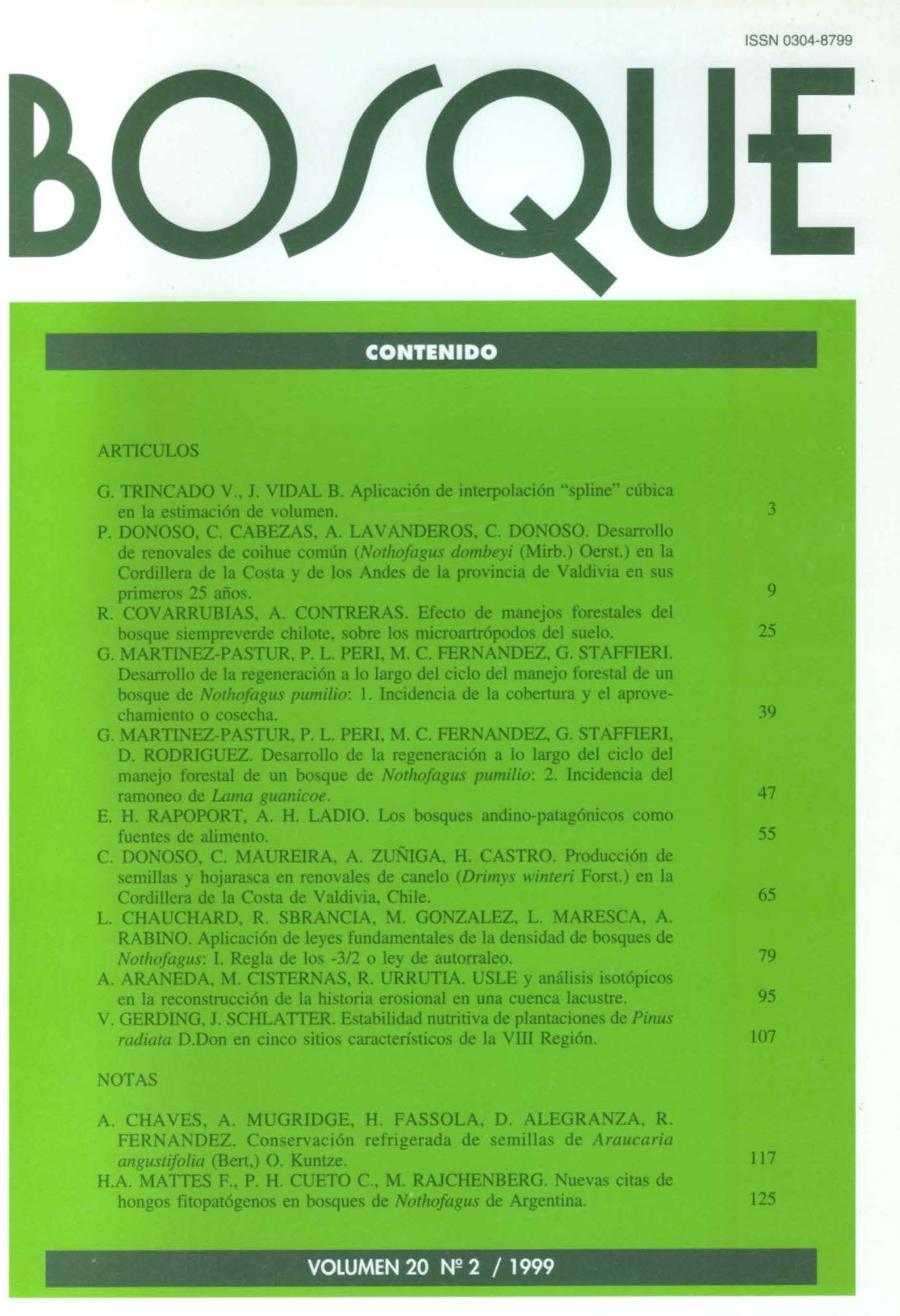The The Andean Patagonian forests as a source of food
Main Article Content
Abstract
Information on the potential contribution of non timber products from the forest to the food system of developing countries was gathered. Natural plant communities normally contain 10% native vascular species, which can be edible. These species in disturbed habitats may increase from 20 to 30%. If only weeds are considered, the relation may reach 30 to 90%. Point-sample frequencies of edible individuals in suburban Austrocedrus chilensis forests in Bariloche, Argentina, registered along transects, varied from 15 to 66%. The probability of finding at least one edible plant in a random 0.25 m2 sample (calculated from n = 317 samples) is 0.675. This probability calculated per hectare, was close to 1.0. In western Patagonia, the number of exotic edible weeds amounts to more than 90 species. The available mean edible biomass in vacant lots in Bariloche was 1253 ± 392.8 kg/ha (193 samples, 1/4 m2 each). A table containing quantitative information on frequencies of edible weeds, and a list of 60 native food plants from Patagonian forests are included.

